10 Things to Think About When Creating an Original Species
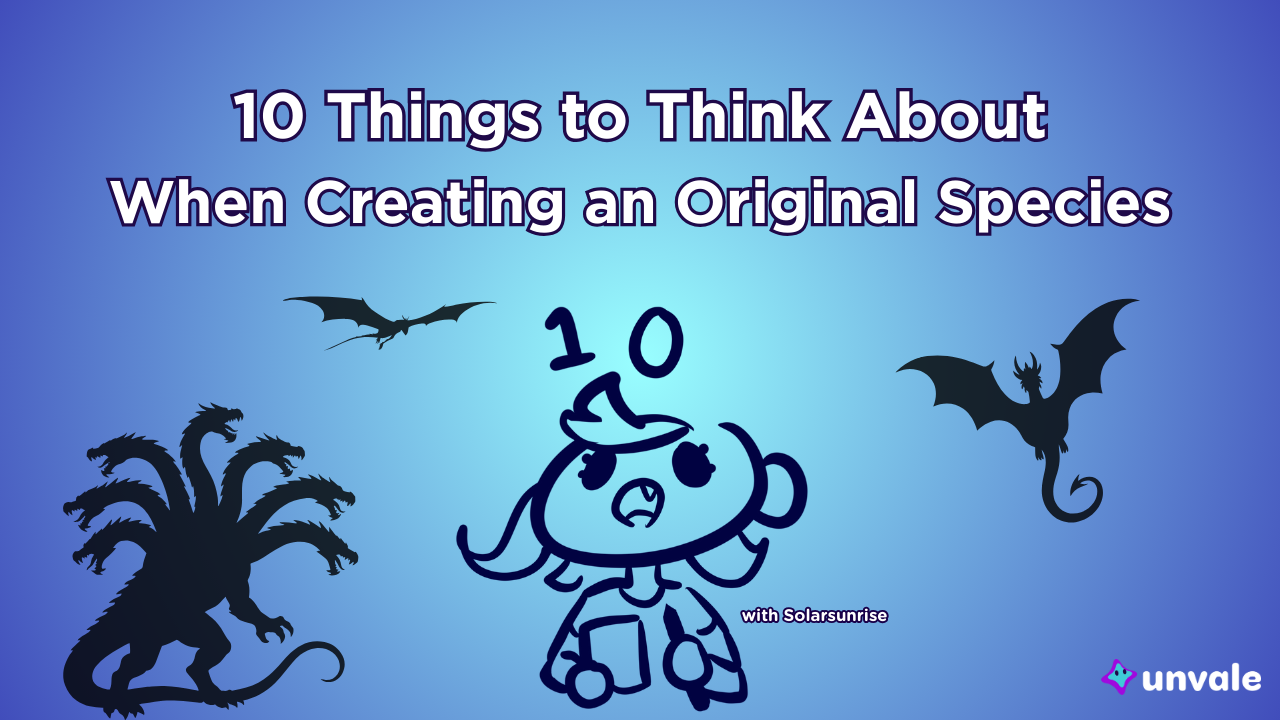
Here’s a list of 10 things to consider when making your own original species. This list mostly covers intelligent lifeforms rather than basic animals, but hopefully the early items can still help you develop your rare cave fish species in your original world that has never seen the sun.
Here’s the list of contents, and then we’ll get straight into it!
- Thinking Outside the Box
- Natural Habitat
- Biological Features
- Adapting Real Life Myths
- Social Behaviour
- Language
- Technology
- Culture and Self Expression
- Domestication
- What’s Fun to You?
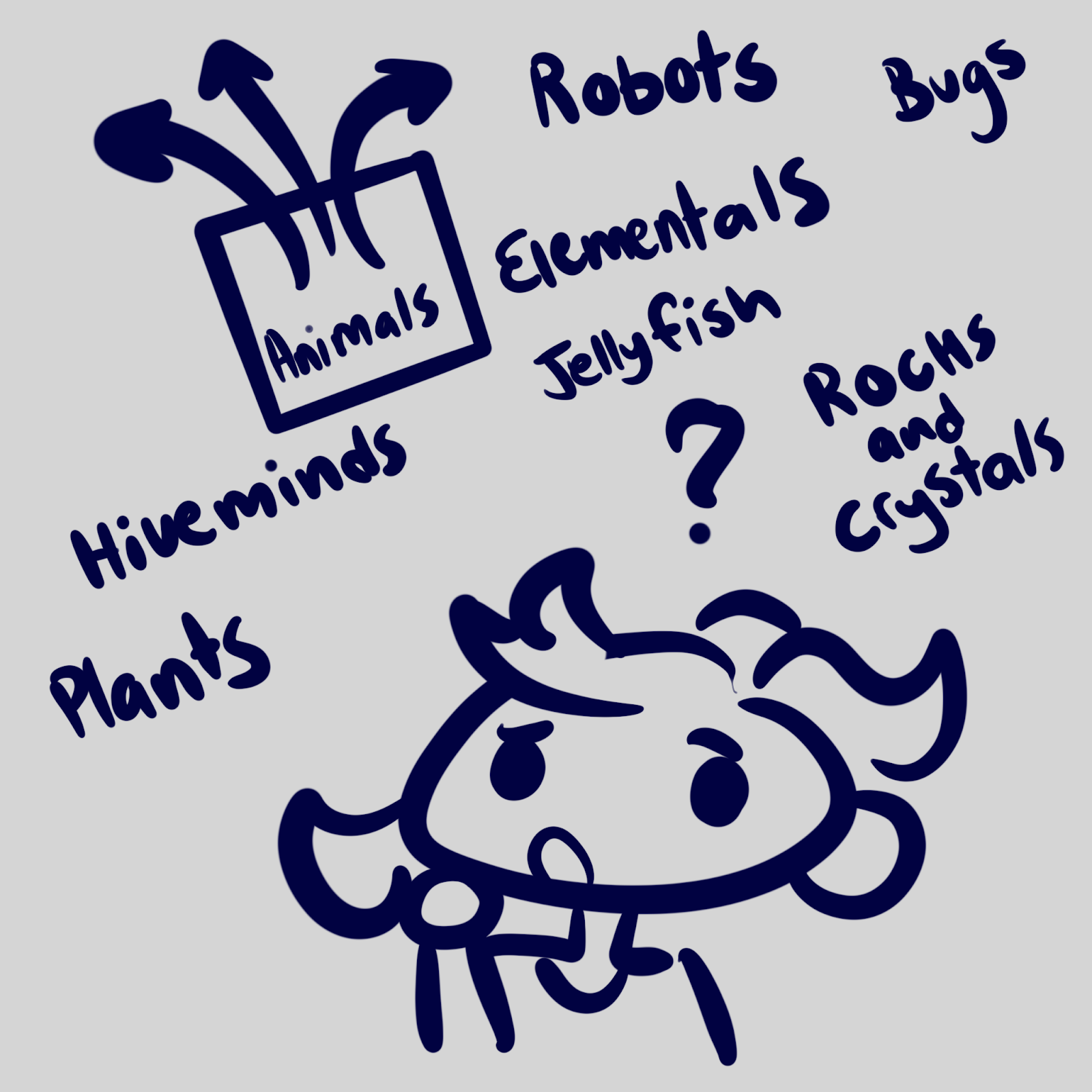
Thinking Outside the Box
Let’s start with the basics: what a species is and doesn’t have to be. As you might remember from your high school biology class, in real life terms a species is a group of creatures that can mate and produce fertile offspring. Some animals can mate and produce infertile offspring, like zebroids, the hybrid offspring of zebras and other equine animals.
As creators, we can both draw from and ignore the rules of reality; ultimately, your species doesn’t have to be a ‘species’ in the traditional sense. It can be a type of human or creature that can intermingle with regular humans, evolved animals that resemble their original form but with new features, alien lifeforms, plants, or even machines!
Natural Habitat
This might be a bit hard to figure out at first, but everything has a natural habitat in some way. Humans can exist in a lot of places on earth due to our ingenuity and tenacity, but places like the South Pole and under the ocean aren’t our natural habitats; our bodies simply can’t exist in those conditions without lots of preparation and technology. Likewise, while your species might be able to exist all over their world, there are places where your species lives their best life. Consider the following:
- Where did your species first arise? (The place they were created, evolved, or placed into.)
- Where do they survive the best?
- Where are places they can’t survive without help?
- What does your species need to survive? (Shelter, water, food, air, etc.)
Biological Features
Like other mammals, humans have a fancy set of chompers and your species potentially does too. Use your tongue to feel the shape of your teeth and think about what they’re for; as omnivores, we have both flat teeth like horses and cows, and sharp canines like cats and dogs. What sort of teeth does your species have based on what they eat? Here are some other things to consider:
- Do you want to keep things grounded in biology, or explore fantastic and sci-fi possibilities?
- If they’re aquatic, do they have gills like fish or do they breathe air like whales?
- If they fly, do their wings support their body weight, or do they use magic to help keep them afloat?
- If they look human but aren’t, what internal differences do they have to humans?
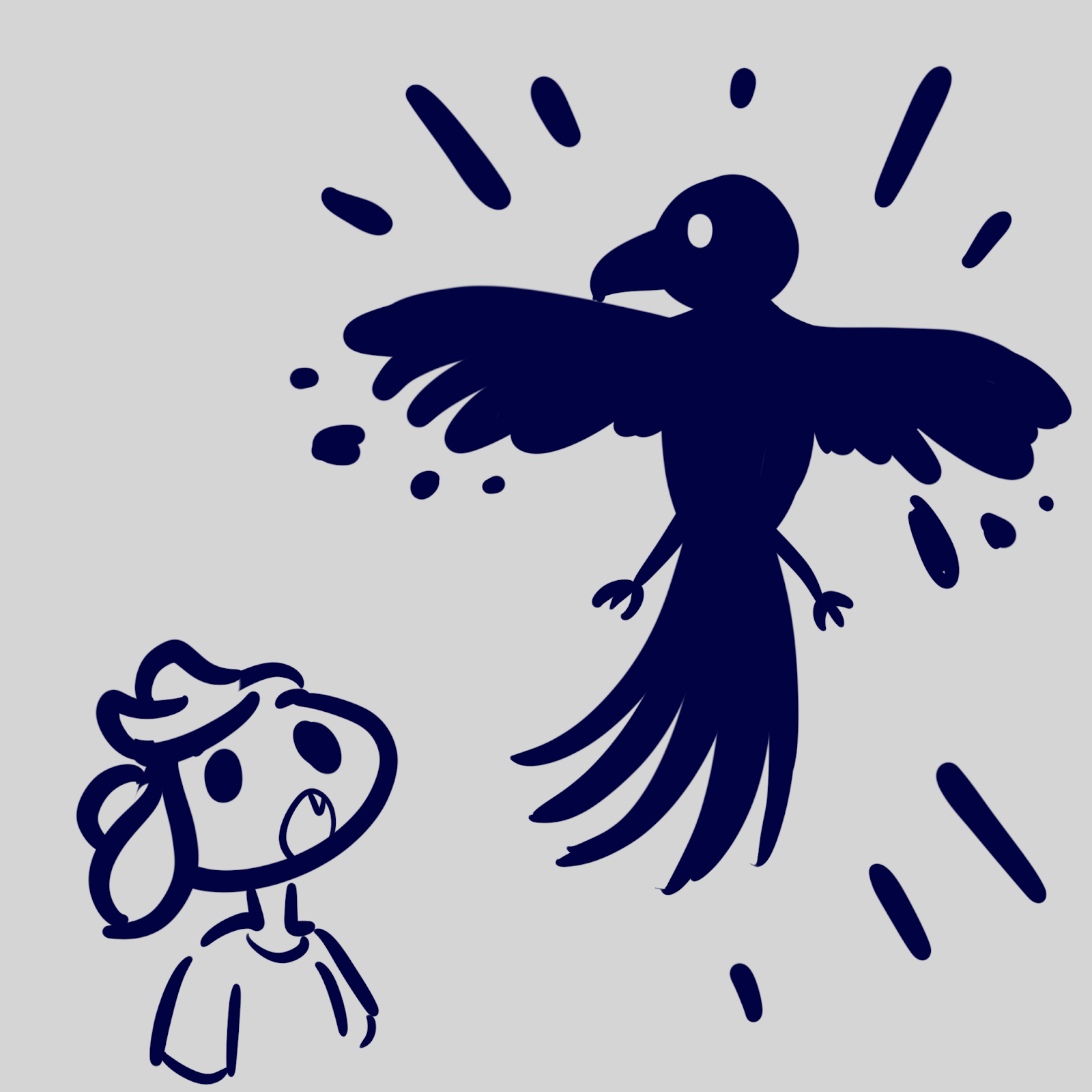
Adapting Real Life Myths
If you remember my first ever article, you’ll know about genre fiction. If you want to learn more about how to use audience expectations to your advantage, then check out that article!
But if you’re using real life myths as your inspiration, you need to check to see if the mythology you’ve chosen is appropriate for Unvale; meaning, it fits our guidelines regarding culturally sensitive content. Certain cultures and traditions have been consistently appropriated by other cultures for many years and become a part of pop culture; BUT, if the culture of origin of the myth you want to use prefers that it’s left alone and not used, please take that into consideration.
Social Behaviors
All animals have some sort of social behavior; even if it’s eating their own species upon contact. How does your species interact with others of their kind?
- Is your species a social animal that likes to form packs or family units? Humans and wolves are the best examples of animals like these.
- Maybe your species is a herd animal, like horses and cows, and survives best in a large group that travels together and looks out for each other.
- Maybe they’re a solitary predator with distinct territory that they mark.
- Does your species have special mating rituals? For example, the male might have fancy feathers and have to dance for the female to win her affections.
Language
How does your species communicate? Maybe they…
- Make vocal sounds like humans and dolphins.
- Use hand signals or body language.
- Change colours like cuttlefish.
- Communicate telepathically.
- Use radio waves to communicate to each other.
- Communicate through scent like cats and dogs.
Do they have a written language? Maybe they only have written language. There are lots of possibilities for what you can do with language and communication, and it’s worth exploring what you can do.
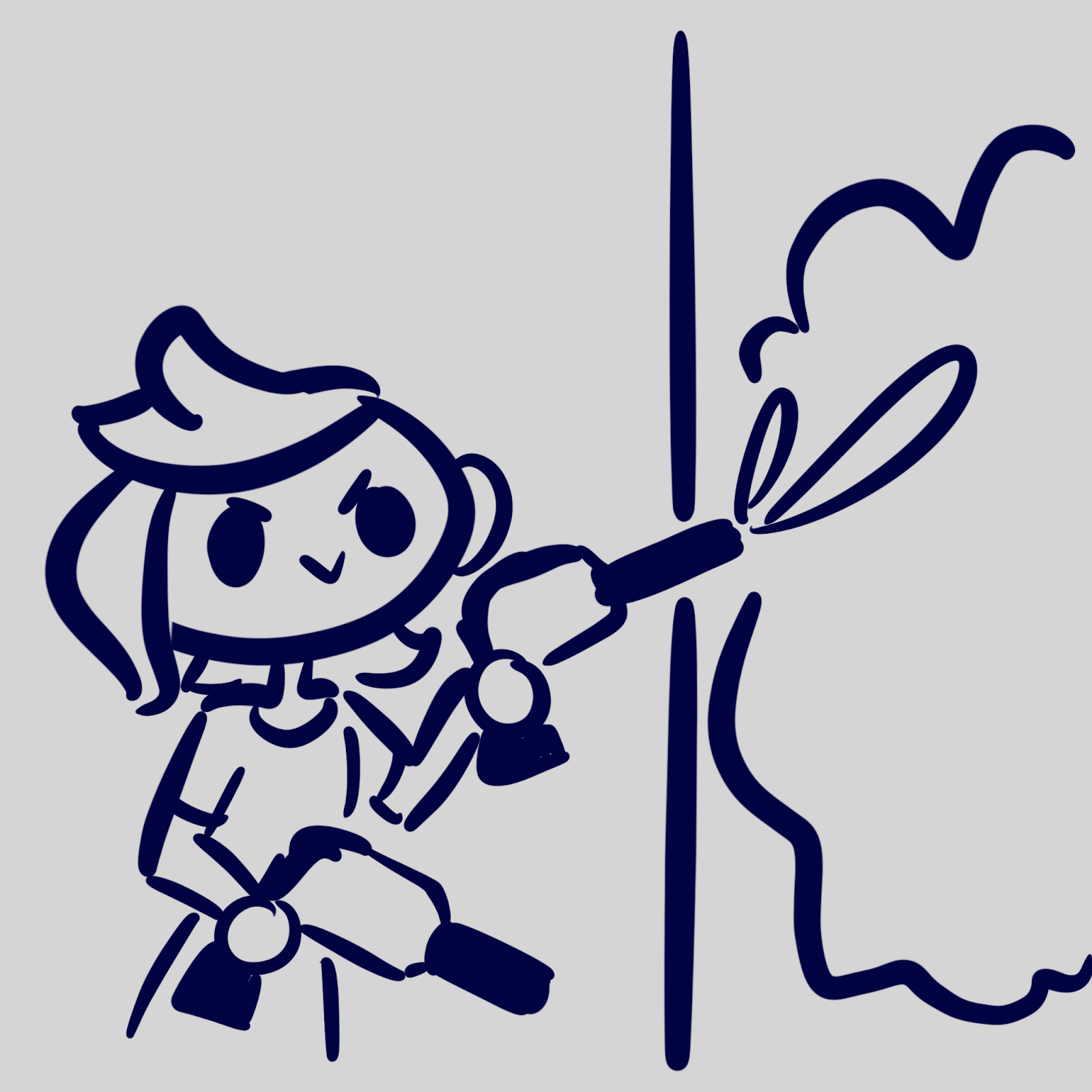
Technology
Even if your species only uses sticks to dig in the dirt for bugs, that’s still a form of “technology”. Here are some questions to ask yourself about your species’ technology levels.
- What sort of tools does your species use? Maybe they use primitive spears, maybe instead they have high powered lasers.
- What do they use their tools for? Hunting, farming, warfare, or artistic self expression? Or all of the above?
- Do they have the ability to refine materials to make more advanced tools and items? (And what basic materials do they have available to create these items?)
- If the answer to the above is ‘no’, but you still want to give them advanced tools, is there another group or species that can trade with them? Or maybe your species inherited these technologies?
Culture and Self Expression
Culture can be simply defined here as food, art, fashion, language, and social norms.
- What ingredients does your species have access to, and how does that define their food culture?
- If your species creates art, what materials do they have and use to do so? Do they paint, create textiles, weave, carve wood or stone, or forge metal?
- If they have the ability to create fabric (or can find it), how do they dress? Do they wear a lot of accessories to show status or heavy furs to combat the cold?
Domestication
Some people say “dogs are man’s best friend”, and that’s probably due to thousands of years of domestication! Domesticated animals live longer natural lives than their wild counterparts and are friendly (or tolerant) of humans. Cats and dogs are both pets and useful creatures to humans; cats hunt down mice and other pests that would eat our food and dogs have been bred for a variety of purposes as well. Does your species have any domesticated animals, whether they’re pets or livestock like sheep and cows?
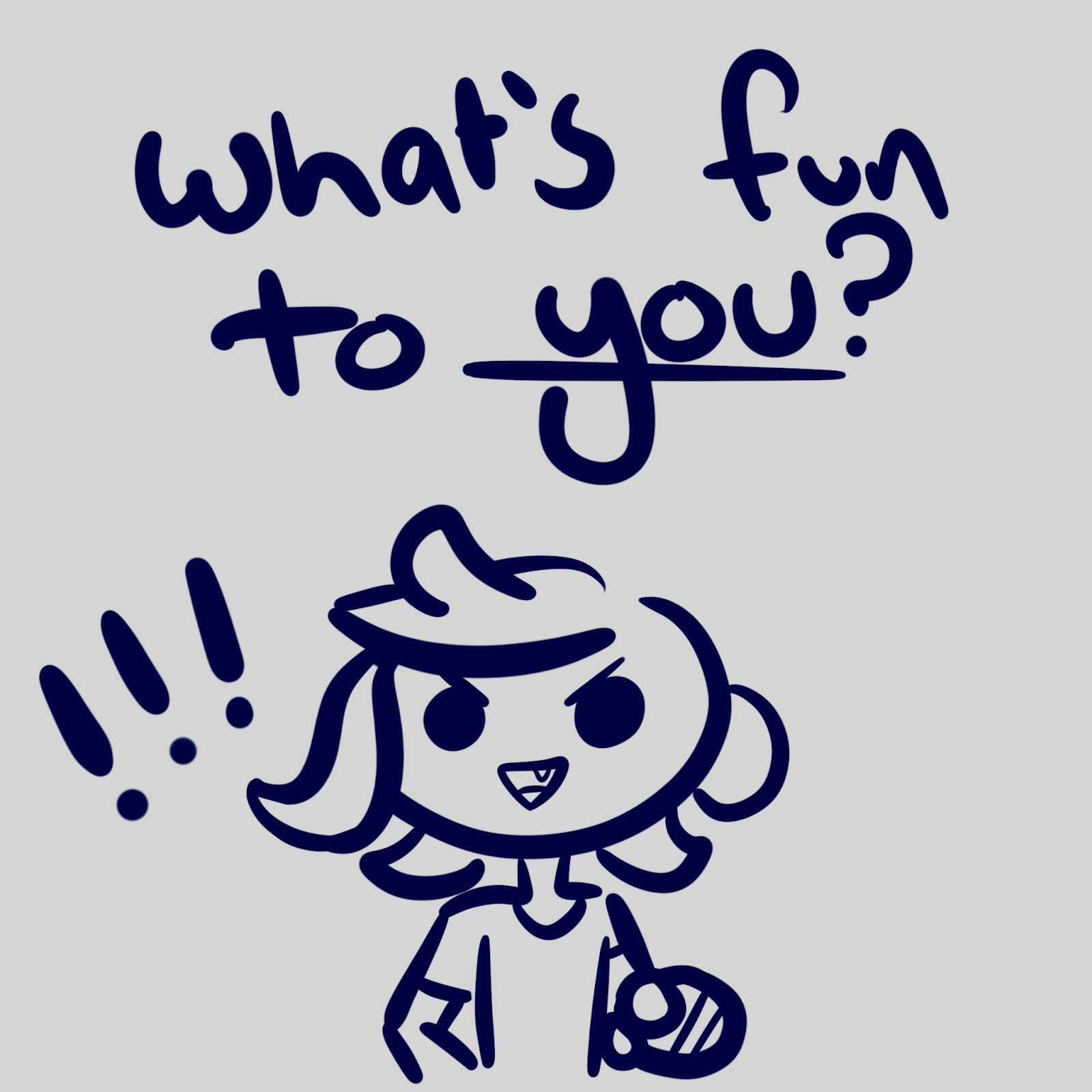
The most important thing.
What’s Fun to You?
This is the biggest thing to think about. Throw out almost everything I said before if it just confuses and stresses you out. What’s the most fun thing for you to do? What brings you joy? That’s what matters most when creating.
Phew! That’s a lot. But if any of these points don’t resonate with you, it’s okay to not think about them too much (especially if they straight up don’t apply to your species). One of my favourite original species on Unvale are Raksz’s Radrians, but there are plenty more to see and explore; check out the #originalspecies tag!
We here at Unvale are excited to see your incredible creations!

